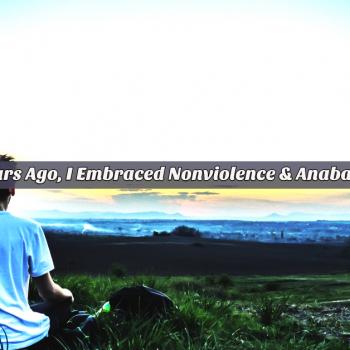The following is part of a fairly long series on the theology and practice of nonviolence. If you would like to read all of the posts, you can do so here.
————————————–
The Nonviolent Imagination
If a command to not use violent force is indeed how Jesus opens up this section of the sermon, then it provides the proper framework into which we can read the illustrations of the following verses. In what comes after Jesus’ words about resisting with violence, are three images that are meant to stimulate the imagination for resisting evil. These would be familiar to a Jewish peasant in the first century as they all pertain to their circumstance of being a subjugated people; both under the religious elitists and the Roman Empire.[1]
Although R.T. France wrongly places this passage only in the category of “personal ethics,”[2] he rightly understands that Christ’s teachings are not mere idealism. He says that, “instead of… dismissing Jesus’ teaching as starry-eyed utopianism, a proper response to this challenging section is to ask in what practical ways Jesus’ radical principles can be set to work in our very different world.”[3] The following three examples will without a doubt beckon us to dream up new ways of appropriating Jesus’ call to nonviolence in our day. Notice that each example is about restoring the victim’s honor and thus, humanity, through creative subversion. Each will expose the social structures of the day as unjust and will seek to appeal to the humanity of the lowly.
Turn the Other Cheek
The call to turn the other cheek, when placed in its historical context, needs to be understood within the grid of an honor-shame society. A slap to the right cheek can only mean what our culture has often called a backhand slap.[4] Especially if the oppressor was one of the Jewish elite, it could be almost guaranteed that the strike to the right cheek did not come from the closed fist of the left hand, for the use of such led to uncleanliness for ten days. It is therefore the logical conclusion that this was a slap with the backside of the hand.[5] In the code of Hammurabi, it is noted that this form of shaming the other would demand a double penalty if the victim took the offender to court (m. B. Qam. 8.6). Not only is this a physical act of violence, but it is a form of dehumanization. The victim in this situation has been robbed of his or her honor, having been treated like an inferior.[6] This is exactly how “masters backhanded slaves; husbands, wives; parents, children; Romans, Jews.”[7]
Is there a solution to this shameful dilemma? Jesus says that the remedy in this situation is not to hit the offender back or to cower in fear; but to turn the cheek the other direction. In doing so, the victim essentially says: “hit me again if you like, but now as an equal, not as an inferior.”[8] An equal demands to be hit with a closed fist, which could be thought of as similar to an old fashioned cowboy saying, “hit me like a man!” This may certainly lead to worse consequences than just another smack to the face, but the power of this kind of nonviolent subversion should not be taken lightly. Imagine if several lowly Jews responded with such defiance. After initially enduring floggings or worse, the power that was held over them by their oppressor has been stripped away. A small social revolution has now been made possible by appealing to a third way approach to the situation.[9]

[1]. Willard M. Swartley, Covenant of Peace: The Missing Peace in New Testament Theology and Ethics (Grand Rapids, Mich.: William B. Eerdmans Pub., 2006), 61-62.
[2]. R.T. France, The Gospel of Matthew (Grand Rapids, Mich.: William B. Eerdmans Pub., 2007), 217ff.
[3]. Ibid., 218.
[4]. Ibid., 220.
[5]. Wink, The Powers That Be: Theology for a New Millennium, 101.
[6]. France, The Gospel of Matthew, 220-221.
[7]. Wink, The Powers That Be: Theology for a New Millennium, 101.
[8]. Tom Wright, Matthew for Everyone, 1 (Louisville, KY: Westminster John Knox Press, 2004), 52.
[9]. Wink, The Powers That Be: Theology for a New Millennium, 101-3.












